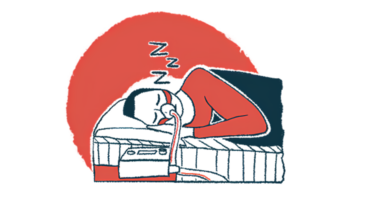3-month Training Program Improves Hand Function in PWS Patients, Study Reports

A low-intensity training program improved hand function in adults with Prader-Willi syndrome (PWS), according to results of a pilot study in six patients.
The research, “Hand strength and dexterity in patients with Prader-Willi syndrome: a pilot intervention study,” was published in the Journal of International Medical Research.
PWS symptoms may include smaller than normal hands, muscle weakness, and hypotonia (decreased muscle tone). Links between hand size and grip strength have been shown, but other factors may contribute to the lower grip strength and impaired hand function in these patients.
Now, a team from the Taipei Tzu Chi Hospital, in Taiwan, measured hand strength and finger dexterity (skill) in people with PWS, and assessed whether a training program could be beneficial.
Six adults with PWS (four men and two women, mean age 26.14 years, range 20-32 years) underwent two hours per week of training for three months. Participants were supervised and guided by trained and certified occupational therapists.
Each session lasted about 120 minutes, and was divided into two parts: one consisting of hand muscle strength training — using therapeutic putty, a clamp, and TheraBand exercises — and one based on gross manual and finger dexterity training — using scissors, painting, cutting, or pasting, and two-hand coordination activities. There was a 10-minute break between the two parts.
Hand grip, lateral pinch, and tip pinch strength tests were performed. To conduct these tests, the team used a hand-held device called a dynamometer and a pinch gauge. To measure lateral pinch, the pinch meter is held between the lateral surface of the index finger and the thumb. To assess tip pinch, the device is held between the tip of the thumb and the tip of the index finger.
The patients’ gross manual dexterity in both hands was assessed with the Box and Block test (BBT), in which they were instructed to move, one by one, as many cubes as they could from one box compartment to another in 60 seconds.
The Purdue Pegboard test, assessing finger and hand dexterity, was divided into four parts: right hand, left hand, both hands, and assembly tests. In the first three, the patient was asked to place as many pins as possible in holes within 30 seconds; in the fourth, both hands were used alternately to construct “assemblies” of a pin, a washer, a collar, and another washer as many times as possible within one minute.
Results showed that at baseline, and compared to reference data from healthy adults, all six PWS patients had reduced hand grip, lateral pinch, and tip pinch strengths, and could assemble fewer cubes and pins in the BBT and Purdue Pegboard tests, respectively, indicating a poorer manual/finger dexterity.
These results in PWS patients were similar to those reported in older populations, the researchers noted.
After the 3-month training period, hand function scores were better on several of the parameters tested; however, only the left hand tip pinch and the right hand BBT performance showed significant improvements.
According to the team, the low intensity and short duration of training may have been insufficient to achieve greater benefits. The PWS patients’ lack of attention, compulsive behavior, and cognitive problems observed during training may also have limited the effects of the intervention, they added.
Overall, the “findings indicate that both hand strength and dexterity should be considered as part of physical training programs for individuals with PWS,” the researchers said.
They team emphasized that further studies are needed with more patients, a higher intensity or home-based training programs, and with longer duration of follow-up “to generate a better understanding of the effects of the training program on hand function” in PWS patients.






